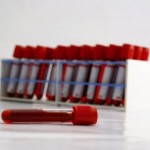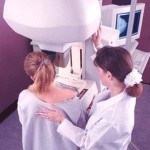Kinds Of Fractures
Our bones are made very strong but some activities that exert too much pressure on the bones might actually result in a fracture. A bone fracture occurs when there is a fragmentation, hairline fissure, or deracination of the bone. There are different kinds of fractures and they are classified in several ways. One major way of classifying fractures is based on their various causes. In this case, we can say there are Traumatic fractures and pathological fractures.
Traumatic Fractures
These kinds of fractures are caused as a result of the performance of an activity that caused the bone to endure a deep impact, a stress, or excessive pressure. Example of a situation that may lead to these kinds of fractures is a vehicular accident or a heavy fall.
Pathological Fracture
There are some medical conditions that may lead to a fracture. Conditions such as bone cyst, bone marrow cancer, osteoporosis, and osteopenia can all lead to a fracture of the bone. These are quite different from other kinds of fractures because the cause of the fracture is not an artificial one but rather a superficial one. Hence, the term pathological fracture is used when a bone is rendered abnormal or declared morbid as a result of certain health conditions.
Kinds of fractures based on orthopedic classification
Fractures can equally be classified based on the different characteristics of a fracture. We call this type of classification an orthopedic classification. They are presented below:
Oblique fracture: this is where the bone axis and the fissure are in diagonal positions
Transverse fracture: This is where the fissure makes a right angles shape to the bone axis
Comminuted fracture: A multi-fragmentary fracture whereby the fissure occurs in different segments of the bone.
Linear fracture: In this situation, the fracture and the long axis of the bone are parallel to each other.
Greenstick fracture: This is when one side of the bone is fractured while the other side remains intact.
Simple fracture: These kinds of fractures occur where the bone has a breakage but does not puncture or affect the epidermis.
Open Fracture: Equally known as compound fracture, these kinds of fractures occur when the bone experience a luxation as a result of exposure to contamintion
Impacted fracture: This occurs when a force is applied to both ends of a bone, which causes it to break into two. These kinds of fractures are very common during heavy falls or motor accidents.
Compression fracture: This occurs when two bones or several bones are forced against each other. This is more common in the spinal bones when the front side of the vertebra disintegrates during an advanced osteoporosis or as a result of sitting or standing.
Avulsion fracture: This occurs when a fraction of a bone is fractured due to a strong muscle contraction. This is more common among sports persons who carried out little or no warm-up before the strenuous sporting activity. There are also other kinds of fractures, including fatigue fracture, hairline fracture, stress fracture, skull fracture, cervical fractures, rib fractures, shoulder fractures, arm fractures, and sterna fractures.






